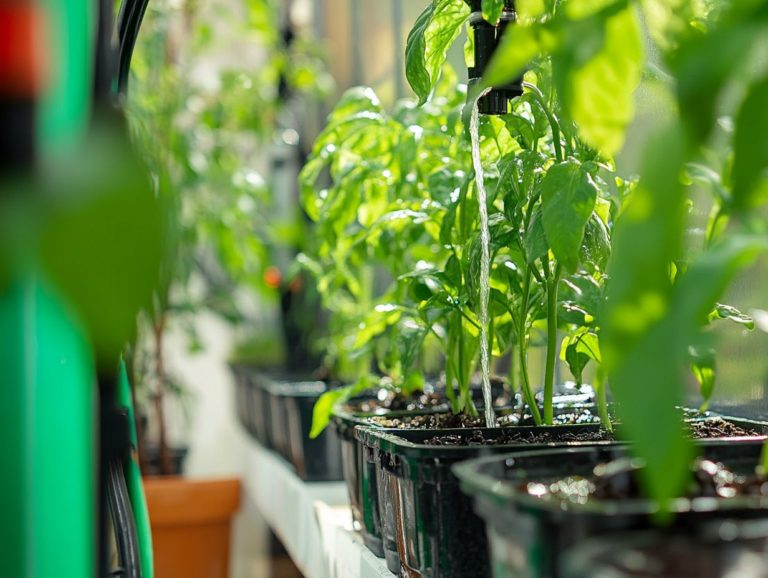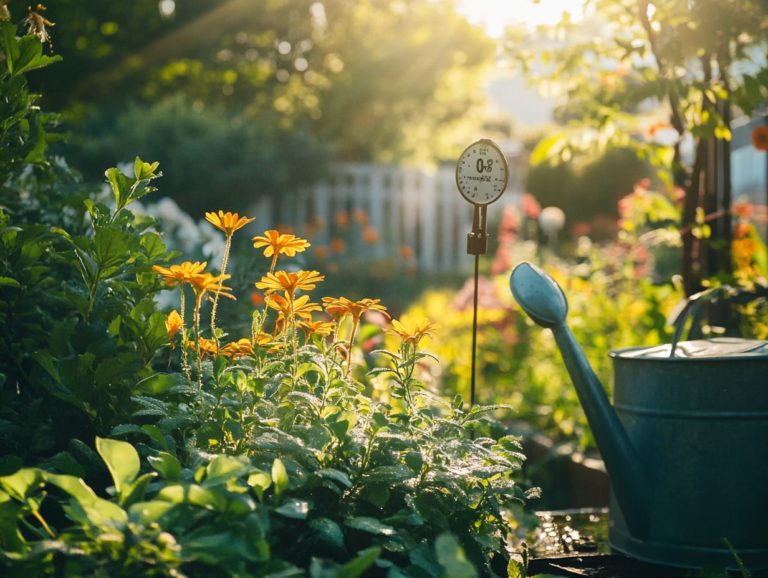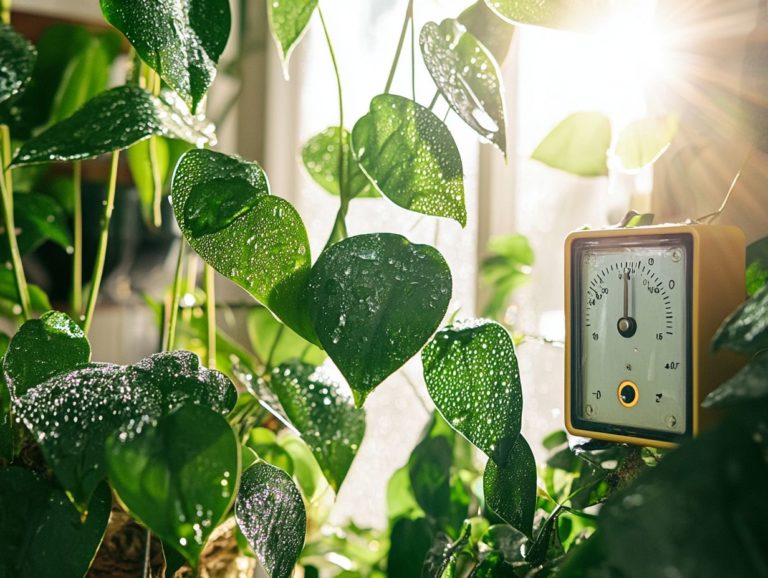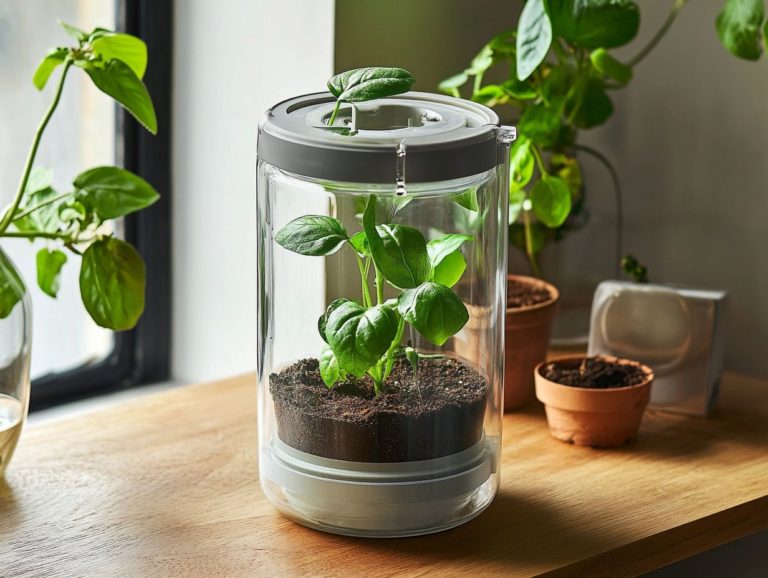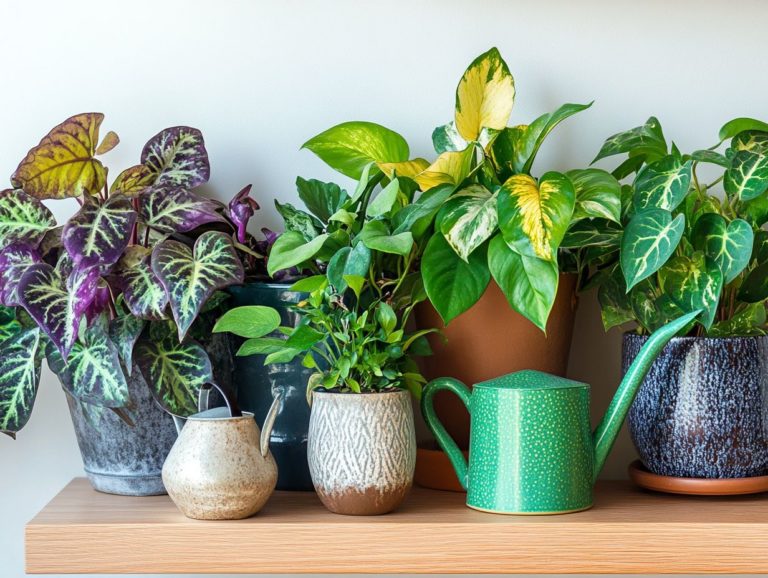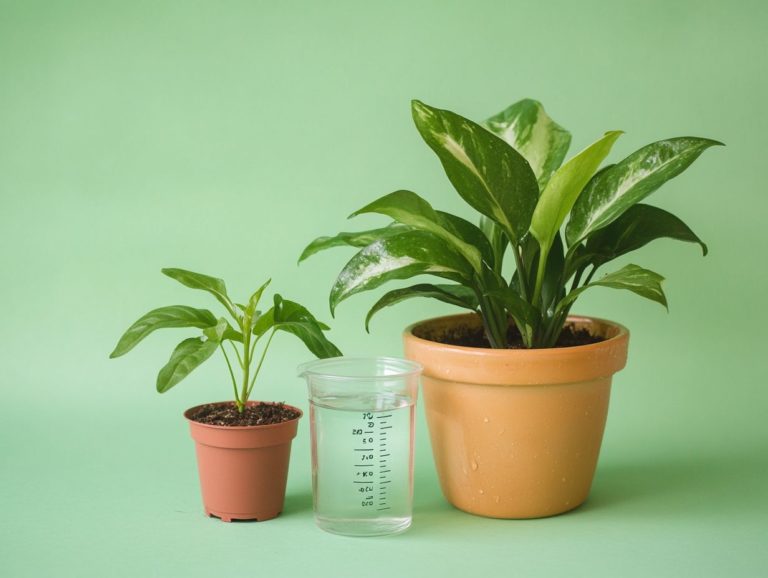5 Expert Tips for Watering Orchids Indoors
Orchids are stunning houseplants that can elevate any space. However, they come with unique care requirements especially when it comes to watering. Mastering orchid hydration is essential for keeping these beauties thriving.
This guide equips you with valuable tips for selecting the right potting mix, effective watering techniques, and adjusting your care routine as the seasons change. You ll also discover common mistakes to avoid, the ideal watering tools to use, and how to ensure proper drainage.
Are you ready to become an orchid watering pro? Let s dive in!
Contents
Key Takeaways:
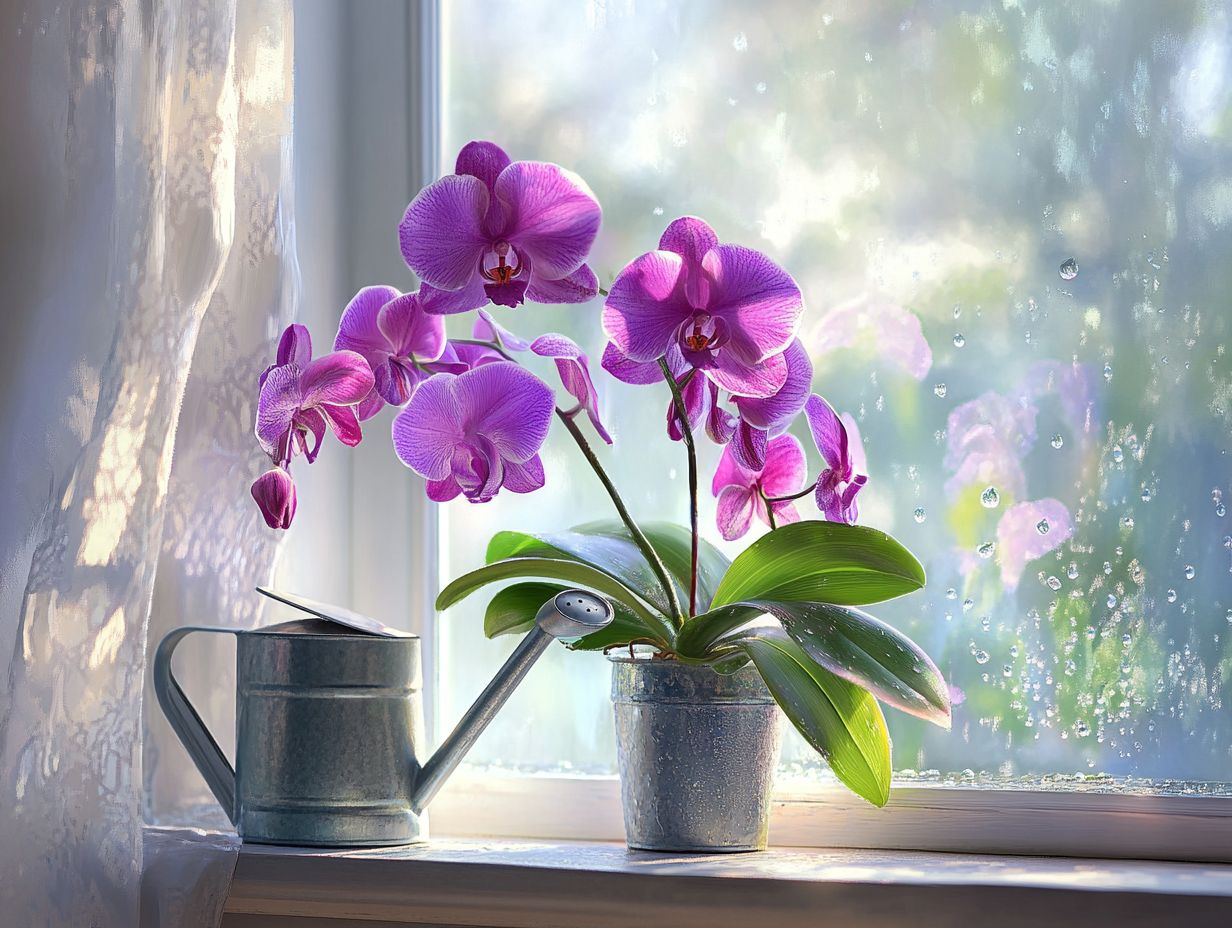
- Choose a well-draining potting mix to prevent waterlogged roots.
- Use a gentle watering technique, aiming for the roots while avoiding the leaves.
- Orchids thrive in warm and humid environments, so maintain the right conditions in your home.
1. Choose the Right Potting Mix
Choosing the right potting mix is essential for your orchids’ well-being. It significantly affects the health of their roots. A suitable mix ensures proper drainage and provides the necessary nutrients for vibrant blooms and robust growth.
For orchids, you ll want a potting medium that typically includes bark chips, sphagnum moss, and specialized orchid compost. These components cater to various species like Phalaenopsis, Dendrobium, and Cattleya.
Each component serves a vital purpose. Bark chips promote aeration, helping to prevent root rot by allowing air to circulate. Sphagnum moss retains moisture, ensuring your orchids don t dry out too quickly while still allowing for drainage. Specialized orchid compost provides a balanced mix of nutrients specifically for their growth.
When you get to know these key components, you ll be ready to choose the best potting mix for your orchids. This leads to healthier plants and stunning flowers that can brighten any space.
2. Use the Right Watering Technique
Mastering the right watering technique is crucial for nurturing healthy orchid plants. Improper methods can lead to issues like root rot or dehydration. Understanding these techniques will help you provide your orchids with the hydration they crave.
Each method has its advantages and drawbacks. Watering from above allows both the leaves and roots to soak up moisture effectively, but it can raise the risk of crown rot, where water collects at the base of the plant, causing it to rot. Submerging your orchids in a container can ensure even hydration but requires vigilant monitoring to avoid over-watering.
Experts suggest adjusting your watering frequency based on the seasons. Orchids generally need less water during cooler months and more as temperatures rise. Keeping a close watch on humidity levels is also vital; dry conditions may require more frequent watering, while a humid environment may need less.
By regularly evaluating these factors, you can create perfect conditions for your orchids to flourish.
3. Pay Attention to Temperature and Humidity
Maintaining the right temperature and humidity levels is crucial for the health of your indoor orchids. These factors greatly influence their growth and blooming potential. Understanding the specific needs of different orchid species, like Vanda and Miltonia, helps you create the ideal environment for those exotic blooms you cherish.
Regular monitoring is essential for ensuring the right conditions. Consider using humidity trays filled with water and pebbles to help maintain moisture around your plants. Daily misting can also be effective; it mimics the orchids’ natural rainforest habitat and enhances their vitality. Just be cautious of cold drafts or temperatures dipping below 60 F, as these conditions can damage their delicate roots.
By observing the foliage and blooming habits of your various orchid types, you can fine-tune your approach, adjusting humidity and temperature to cater to the specific preferences of your beloved orchids.
Start your orchid watering journey today and watch them flourish!
4. Water Less Frequently in Winter
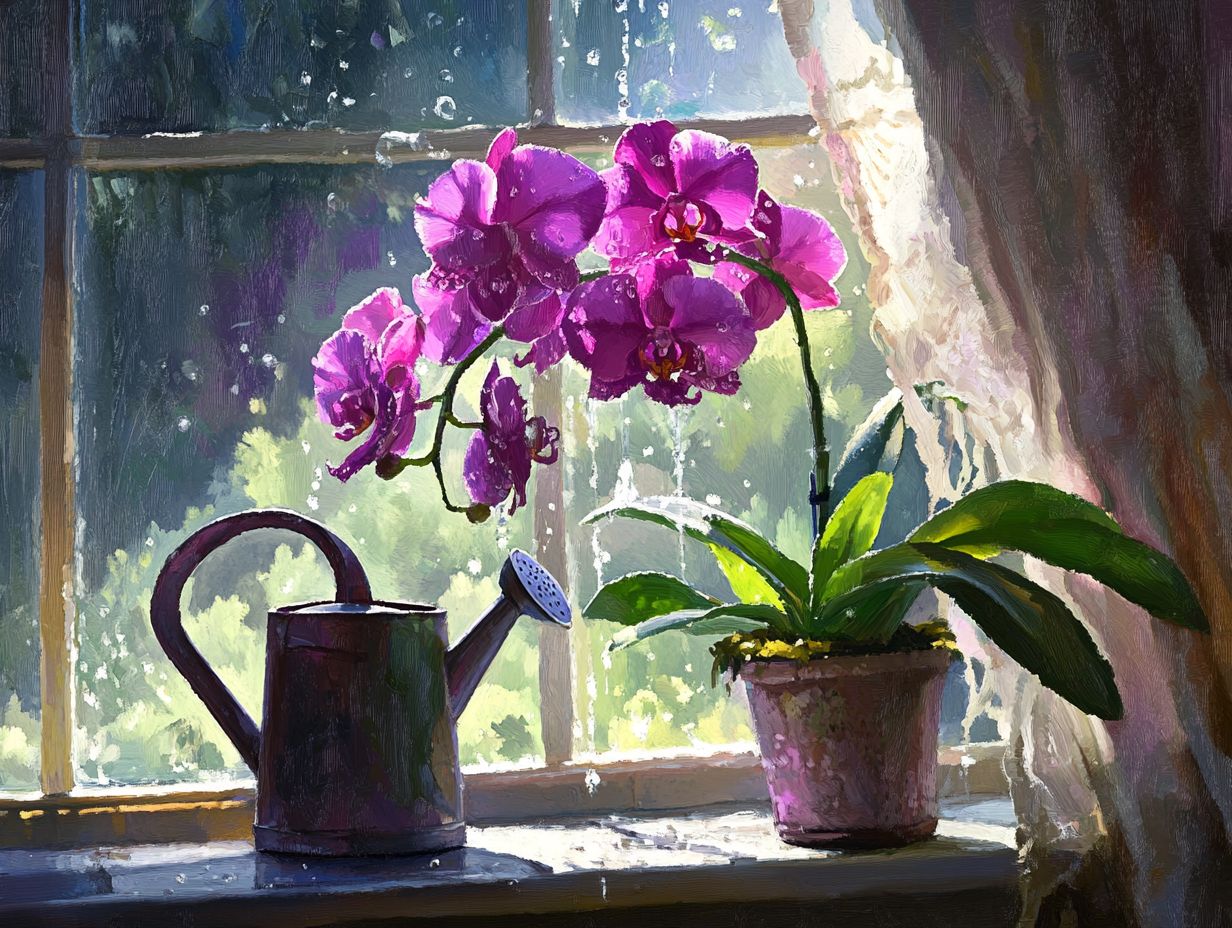
During the winter months, it is essential to adjust your watering frequency for orchids. The cooler temperatures and diminished light levels can slow growth and heighten the risk of root rot, which occurs when the roots sit in water for too long, causing them to decay.
By understanding the seasonal care requirements of these exquisite plants, you can ensure they remain vibrant and thrive even in less-than-ideal conditions. Carefully observe the moisture levels in the potting medium and stay vigilant for signs of distress, such as drooping leaves or yellowing roots.
Proper drainage is crucial. It prevents stagnant water that can lead to root issues and allows excess moisture to escape, ensuring that your orchid’s roots receive the oxygen they need to flourish.
As the seasons shift, keeping an attentive eye on these factors will help you maintain a balanced watering regimen, maximizing the health and beauty of your orchids throughout the year.
5. Watch for Signs of Overwatering or Underwatering
Recognizing the signs of overwatering or underwatering is crucial for preventing damage to your orchids. Both conditions can hinder root health and stymie growth.
Look out for symptoms like yellowing leaves, wilting, and root rot. Act quickly if you see drooping leaves!
To effectively assess the condition of your orchid roots, gently remove the plant from its pot and examine the roots for color and texture. Healthy roots should appear firm and a lovely greenish-white, while brown or mushy roots indicate overwatering and potential rot.
On the other hand, overly dry roots might look shriveled and diminished, signaling they re thirsty for moisture. Monitor your orchids leaves as well; if the foliage begins to winkle or feels overly soft, it s a clear signal that something s amiss with your watering routine.
Establish a regular watering schedule tailored to environmental factors like humidity and temperature. Taking the time to educate yourself on the specific water requirements for different orchid varieties will help you maintain their optimal health and avoid the pitfalls of misjudged hydration.
How Much Water Do Orchids Need?
Understanding how much water your orchids truly need is fundamental to their care. The required amount can vary significantly based on factors like the type of orchid, pot size, and environmental conditions.
By establishing a consistent watering schedule and using appropriate watering pots, you can ensure that your orchids receive the perfect amount of hydration for optimal growth.
Different orchid species come with their unique demands. For instance, Phalaenopsis orchids prefer to dry out slightly between waterings, while Cattleyas thrive with a more generous approach due to their thicker roots.
In terms of potting medium, consider that bark-based mixes typically retain less moisture than moss, which will influence how often you need to water. Seasonal changes are equally important, as your orchids may require less water during their winter dormancy compared to the warmer months.
Therefore, adapting your watering frequency to reflect these environmental changes will not only promote healthier growth but also help you avoid the pitfalls of root rot or parched plants.
Start adjusting your watering routine today to see your orchids flourish!
What Are the Different Types of Orchids and Their Watering Needs?
Did you know that watering your orchids can make or break their health? Understanding the distinct watering needs of various orchid types, such as the beloved Phalaenopsis, Dendrobium, and Cattleya, is crucial for your successful orchid care.
Each species has its unique requirements that influence how often you water and the choice of the soil you use for your orchids.
Take the Phalaenopsis, for example. Typically found in tropical regions, it thrives on a careful balance of moisture and airflow. A weekly watering schedule is ideal to prevent root rot.
On the other hand, Dendrobium orchids, which flourish in more variable environments, tend to appreciate less frequent watering, especially during their dormant periods.
Cattleya orchids, with their stunning blooms, prefer a soak-and-dry approach. They need a good soak every 10 to 14 days but flourish with drier conditions in between.
It s vital for you to assess the humidity and light levels in your home. These factors directly impact how often you should water each type.
By keeping a vigilant eye on the leaves and roots, you ll be well-equipped to make any necessary adjustments to your care routine.
What Are the Common Mistakes in Watering Orchids?
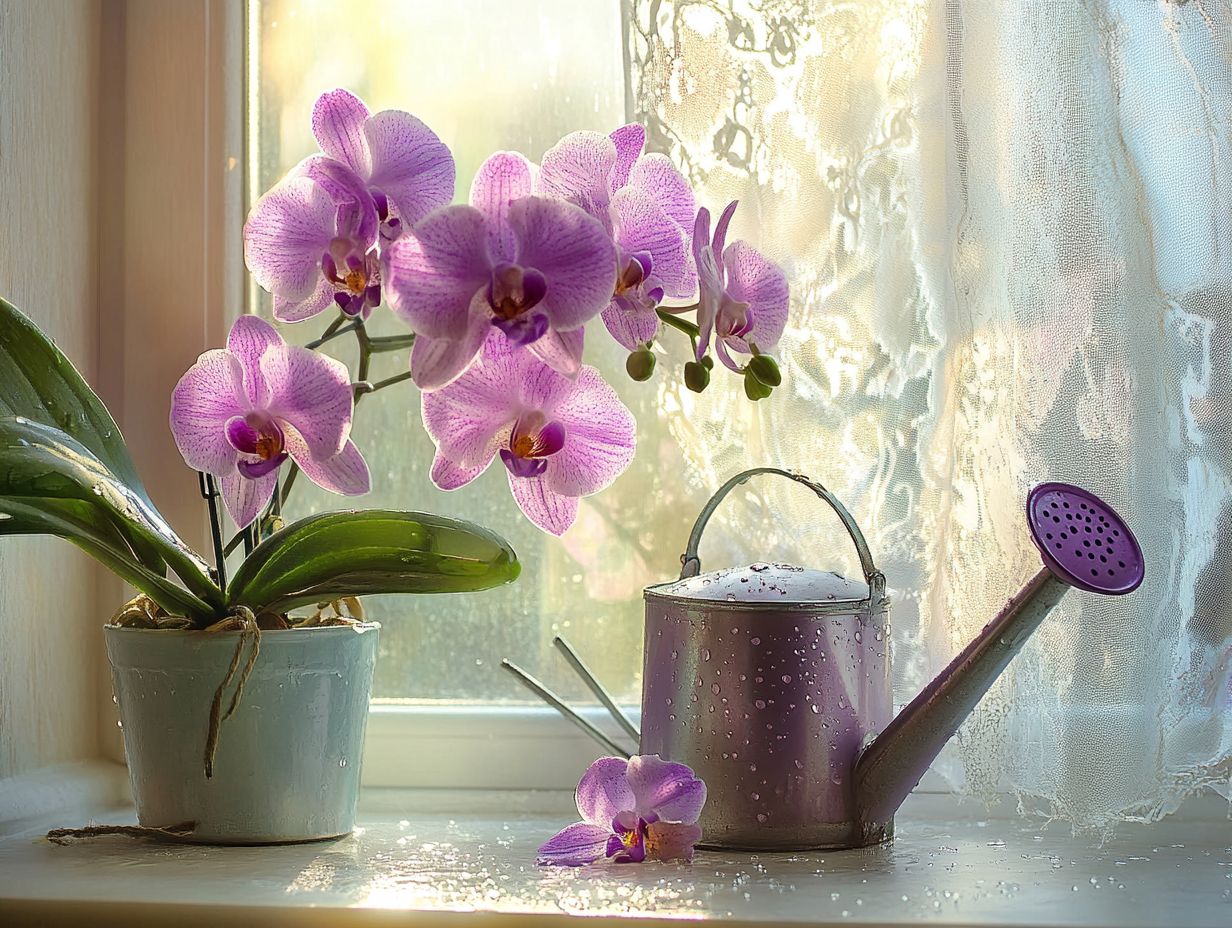
Common mistakes in watering orchids can lead to significant issues like root rot and pest infestations. This can undermine your diligent efforts to maintain healthy plants.
By understanding these pitfalls, you can elevate your orchid care and prevent unnecessary damage.
One major error often encountered is over-watering. This can suffocate the roots and foster a breeding ground for harmful bacteria. Many orchid caretakers may overlook the importance of drainage, which is the ability for water to flow out of the pot. This negligence can lead to stagnant water accumulating in the pot.
Consider employing different watering techniques:
- Watering from above: This mimics the gentle touch of natural rainfall while ensuring better drainage.
- Bottom watering: This technique allows your plant to absorb moisture at its own pace, creating a more balanced environment.
By recognizing these common pitfalls and applying effective techniques, you can significantly enhance the health and vibrancy of your orchids.
How Can One Create the Ideal Watering Schedule for Orchids?
Crafting the perfect watering schedule is key to keeping your orchids vibrant and healthy! It helps you maintain the right moisture balance.
By considering factors such as seasonal changes, the soil you use for your orchids, and the specific needs of each orchid species, you can craft a personalized plan that champions healthy growth.
Taking these elements into account allows for a more careful approach. Some orchids may flourish in drier conditions during winter, while others might crave more moisture due to heightened humidity levels.
Keeping an eye on local weather patterns will also guide your watering frequency, ensuring your schedule remains flexible throughout the year.
By regularly assessing temperature fluctuations, you can fine-tune your plan to avoid the pitfalls of overwatering or underwatering.
Understanding the unique traits of each orchid type is essential in developing an effective and responsive watering strategy.
What Are the Best Watering Tools for Orchids?
Choosing the best watering tools for your orchids is essential for effective hydration. You want to ensure that each plant receives just the right amount of moisture without jeopardizing those delicate roots.
Consider options like a watering can with a narrow spout or specialized watering pots. These can significantly enhance your orchid care routine.
Innovative techniques and tools can truly transform your watering experience:
- The rising trend of using ice cubes for watering works wonders. This slow-release method allows your plants to absorb moisture gradually, mimicking the gentle touch of natural rainfall.
- Humidity trays filled with pebbles and water help maintain optimal humidity levels, creating a stable environment that these tropical beauties thrive in.
Each of these watering tools encourages healthy growth while minimizing the risk of overwatering a frequent concern for orchid enthusiasts like yourself.
Start monitoring your orchids today to see how they respond to your care!
How Can One Ensure Proper Drainage for Orchids?
Ensuring proper drainage is crucial for the health of your orchids. It prevents water retention, which can lead to root rot and other complications. By selecting the right orchid pots and using suitable potting materials like bark chips, you can enhance drainage and nourish healthy orchid roots.
The design of your pots plays a vital role. Choosing pots with ample drainage holes or slotted orchid containers allows excess water to escape easily, minimizing the risk of stagnant moisture.
When selecting potting mediums, materials like sphagnum moss, charcoal, and perlite can effectively manage moisture without suffocating the roots. Remember, different orchid species have unique drainage needs. For example, types of orchids that grow on trees thrive in a chunky mix that promotes airflow, while ground orchids prefer a denser substrate.
Understanding these care intricacies will help you cultivate vibrant, healthy blooms.
Frequently Asked Questions

What are 5 expert tips for watering orchids indoors?
1. Find the right balance: Orchids need enough water to keep their roots moist but not too much that they become waterlogged. Finding the right balance for your specific type of orchid is essential.
2. Use room temperature water: Orchids prefer room temperature water, typically between 65-75 degrees Fahrenheit. Avoid cold or hot water, as it can shock the plant.
3. Water early in the day: Watering orchids in the morning allows any excess water to evaporate during the day, helping to prevent mold or fungal growth.
4. Water at the roots: Focus on watering the roots instead of the leaves. Orchids absorb water through their roots, making this the most effective hydration method.
5. Use a draining pot: Orchids require well-draining soil to prevent waterlogging. Choose a pot with drainage holes and a mix of orchid bark, sphagnum moss, and perlite for optimal results.
How often should I water my orchids?
The frequency of watering depends on your specific type of orchid and its environment. Generally, orchids should be watered once a week, but some may need more or less based on their individual requirements.
What are signs that my orchid needs water?
If your orchid’s roots look dry and shriveled or if the leaves are wilting or turning yellow, it may need water. However, always check the moisture level of the soil before watering.
Can I use tap water to water my orchids?
Tap water is generally safe, but let it sit for at least 24 hours before use. This allows chlorine or fluoride to dissipate, which can be harmful to the plant.
What should I do if I accidentally overwatered my orchid?
If you notice waterlogged roots or yellowing leaves, you may have overwatered your orchid. Gently remove the plant from its pot and let the roots dry out for a few days before repotting in fresh, well-draining soil.
Can I water my orchids with ice cubes?
Some suggest using ice cubes to water orchids, but this can harm the plant. The sudden temperature change can shock the roots. Stick to room temperature water when watering your orchids.
Do you have your own orchid care tips or questions? Share them in the comments below!

